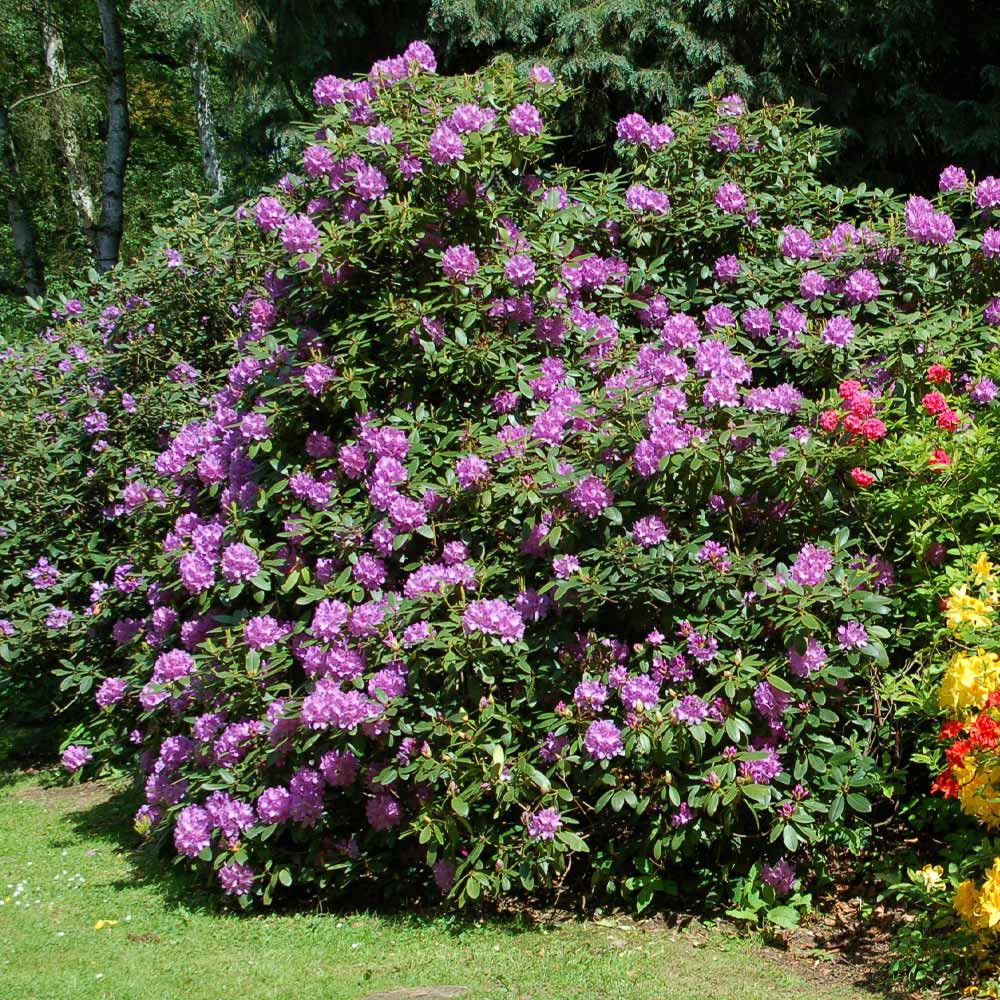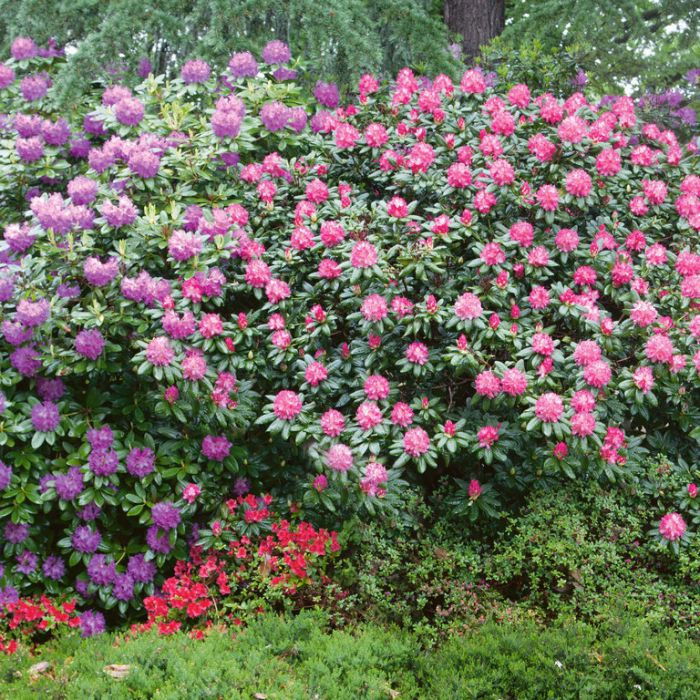
Rhododendrons have earned their place in the garden. Some say they are overused for a reason. That’s because not only are they native to our beloved mountains, they’re also virtually indestructible and beautiful. If a plant is tried and true and beautiful, why ignore it? Many times, when we’re looking for an “interesting” plant, there’s actually an amazing, reliable plant right in front of us that we won’t lose any sleep or money over.
While I’d like to convince you, there are many varieties to choose from, ranging from all-white flowers (‘Chionoides’) to deep purple flowers (‘Lee’s Dark’) and many colors in between. Also sized to fit large hedges or small patios and potted plants. It’s time to think about azaleas in the garden.
Know the Rhododendron

The genus Rhododendron includes many different species of ornamental trees. There are more than a thousand species within this genus.
Some species grow wild in places like Tibet and the Himalayas. Some wild species even grow in Atlantic Canada.
Other rhododendron species have been grown for centuries and are found in beautiful gardens and landscapes around us.
Where is the best place to grow rhododendrons?
The best place to plant azaleas is in a spot with morning sun and afternoon shade.
The largest and healthiest azaleas in our garden grow in places like this.
If you plant your rhododendron in an ideal location and provide it with the right amount of sunlight, moisture, shelter, and good soil, it will reach optimal size depending on the variety or cultivar potential.
How to propagate rhododendrons

The easiest way for home gardeners to propagate azaleas or rhododendrons is to layer existing plants. Press down on a lower branch until it touches the ground. Cut a slit in the branch touching the ground and apply rooting hormone. After a few years, the rooted branches are cut off, separated from the parent and transplanted.
Another method of propagation is through stem cuttings of new shoots in early autumn. Soak the cuttings in rooting hormone, plant them in planting medium and store them in a warm place. After about 6 weeks to 4 months, roots form.
If growing from seed, sow it indoors in moist potting soil in early winter. Provide an environment with warmth, high humidity, and no direct sunlight. Transplant the tiny seeds into individual pots. It takes about two years to get them in the ground.
Accommodation requirements:
– Planting in a sheltered location will help prevent the leaves from drying out due to strong winds.
– Rhododendron’s evergreen leaves tend to dry out and turn brown when exposed to the full force of nature.
– We noticed this in the planting on all sides of the house. Our healthy azaleas are planted in a wind-protected location.
– Those plants that grow outdoors tend to be more susceptible to injury.
Growth areas:
– The area planted with rhododendrons varies depending on the variety.
– For example, some rhododendrons grow in arctic conditions, while others grow in tropical areas.
– It is important to choose varieties that will grow well in your planting area.
– Most azaleas prefer warm areas that are not too hot in the summer and not too cold in the winter.
Sunlight Conditions:
– Some sunlight is very important for azalea growth, especially flowering. If your azalea’s blooms are restricted, pay attention to the amount of sunlight it receives.
– Rhododendrons should receive at least six hours of sunlight each day.
– Rhododendrons grow best in locations with sun but also shade during the hottest parts of the day, especially in warmer areas.
Soil Conditions:
– Rhododendrons grow best in well-drained, acidic soil (pH 4.5-6) rich in organic matter.
– If you are growing in a different soil type, or your soil is not suitable for growing azaleas, you can easily amend the soil to meet the needs of your azaleas.
Moisture Conditions:
– Rhododendrons have relatively shallow roots and require regular moisturizing and watering to keep the plant healthy.
– A good way to maintain soil moisture is to spread mulch around the base of your plants. Mulch helps keep the soil moist by trapping moisture beneath the mulch and preventing sunlight and wind from drying it out.
When to Plant Rhododendrons

– The best time to plant rhododendrons depends on the region and region where they are planted.
– In warmer areas, autumn planting is ideal due to cooler weather. However, you can actually plant azaleas in these areas at any time.
– Spring planting is best done in cooler areas. This allows the plants to develop a good root system in the fall before the ground freezes.
– Rhododendrons have very shallow root systems, so any root growth during the growing season helps hold the plant in place and prevents it from rising during winter frosts.
– Rhododendrons produce new shoots in the spring after the flowers fade. These leaves are evergreen and will remain on the plant as long as they are healthy.
Rhododendron or Azalea?
Rhododendrons and Azaleas are often confused. Rhododendrons were once considered a separate genus of plants, but until recently they were classified as plants that are genetically similar to rhododendrons.
Now they belong to the same genus. People tend to think of azaleas as large evergreens with large clusters of flowers and associate azaleas with smaller leaves and shorter growth habits.




















